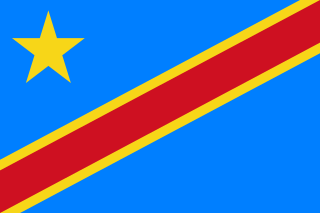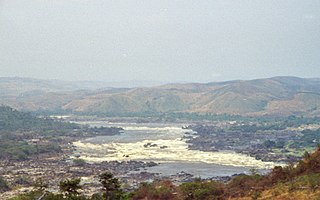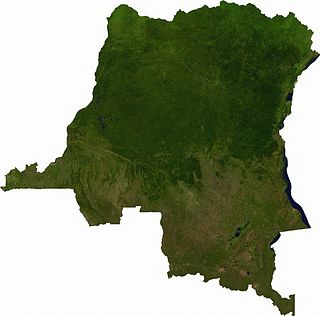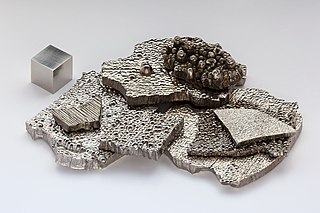Early European visitors
In 1816 Captain James Hingston Tuckey of the British Royal Navy was the first European to visit the Bundi valley. At that time the Inga plateau was the base of a chiefdom with 300 people and 70 huts. The market in Inga prospered from imposing levies on British, Portuguese, French and Belgian slave traders going up river, and on slave caravans coming down to the Atlantic coast.
Henry Morton Stanley visited in February 1880. He speculated that at some time in the past the Congo had run through the Bundi valley, leaving it almost completely level. He wrote, "The Bundi is a beautiful stream of very clear water, brawling in the dry season over rocks and smoothly polished stones and pebbles at the bottom of a deep rocky valley. He said that game was abundant, but unfortunately so were sand-flies, gad-flies and chigoes, while in the yellow creek the crocodiles were numerous. He measured the distance from the Bundi to the Bula River as almost 16 miles (26 km).
Guillaume Casman arrived in Vivi and joined an expedition led by Captain Edmond Hanssens. They left on 21 January 1884 with a column of 30 men, and reached the banks of the Bundi River on 23 January 1884. Rains had made it overflow its banks and turn its valley into a huge swamp. The Swedish officer Peter August Möller passed the river when travelling from Vivi to Isangila. He wrote in 1887:
During our march to Issangila we encamped in the valley of the Bundi river, which is known for its great richness in buffaloes and antelopes of different kinds. We could also observe numerous trails of these animals everywhere. Parts of the river-bed was moreover beaten by hippopotami, that obviously were grazing there [at] night. It was thus very tempting to me to stay there, but our journey did not allow it. I comforted therefore myself with my hopes of having the opportunity to come back to this rich hunting ground in the future.(Möller 1887:49)
Grand Inga Dam
A 2013 BBC article said the DRC had signed a deal with South Africa to sell it power from the planned Grand Inga Dam hydroelectric power project. A single dam wall would feed six power stations that would produce 40,000 megawatts of electricity. The 145 metres (476 ft) tall dam would flood the Bundi valley, which was home to 30,000 villagers, turning the valley into a huge lake. The Congo River would now enter the north end of the lake, and leave through turbines at the dam across the south end. In June 2020 it was reported that President Félix Tshisekedi was planning to present the Grand Inga projects to meetings of the Africans heads of state, to obtain expressions of interest in buying the energy that would be produced.
Opponents of the dam noted that the Bundi valley holds a combination of agricultural lands and natural environments that are home to wildlife. Up to 60,000 people could be displaced, and the network of roads and power lines across the Congo Basin could cause create social and environmental damage. No environmental impact study was planned.

The Congo River, formerly also known as the Zaire River, is the second longest river in Africa, shorter only than the Nile, as well as the second largest river in the world by discharge volume, following only the Amazon. It is also the world's deepest recorded river, with measured depths in excess of 220 m (720 ft). The Congo-Lualaba-Chambeshi River system has an overall length of 4,700 km (2,920 mi), which makes it the world's ninth-longest river. The Chambeshi is a tributary of the Lualaba River, and Lualaba is the name of the Congo River upstream of Boyoma Falls, extending for 1,800 km (1,120 mi).

The Democratic Republic of the Congo, also known as Congo-Kinshasa, DR Congo, the DRC, the DROC, or simply either Congo or the Congo, and formerly Zaire, is a country in Central Africa. It is, by area, the largest country in sub-Saharan Africa, the second-largest in all of Africa, and the 11th-largest in the world. With a population of around 105 million, the Democratic Republic of the Congo is the most populous officially Francophone country in the world, as well as the fourth-most populous country in Africa and the 15th-most populous country in the world. It is a member of the United Nations, Non-Aligned Movement, African Union, and COMESA. Since 2015, the Eastern DR Congo has been the site of an ongoing military conflict in Kivu. The capital and largest city is Kinshasa.

Livingstone Falls, named for British explorer David Livingstone, are a succession of enormous rapids on the lower course of the Congo River in west equatorial Africa, downstream from Malebo Pool in the Democratic Republic of the Congo.

The Ruzizi is a river, 117 kilometres (73 mi) long, that flows from Lake Kivu to Lake Tanganyika in Central Africa, descending from about 1,500 metres (4,900 ft) to about 770 metres (2,530 ft) above sea level over its length. The steepest gradients occur over the first 40 kilometres (25 mi), where hydroelectric dams have been built. Further downstream, the Ruzizi Plain, the floor of the Western Rift Valley, has only gentle hills, and the river flows into Lake Tanganyika through a delta, with one or two small channels splitting off from the main channel.

Inga Falls is a rapid 40 km from Matadi in the Democratic Republic of the Congo where the Congo River drops 96 m (315 ft) over the course of 15 km (9 mi). The falls are part of a larger group of rapids in the lower Congo River. Livingstone Falls are located upstream closer to the Pool Malebo. These falls have formed in a sharp bend of Congo River where the width of river fluctuates from more than 4 km to only 260 m.

The Inga Dams are two hydroelectric dams connected to one of the largest waterfalls in the world, Inga Falls. They are located in the western Democratic Republic of the Congo and 140 miles southwest of Kinshasa.

Articles related to the Democratic Republic of the Congo include:
The Western Power Corridor (Westcor) was a project to construct and supply energy from two hydroelectric power plants to the Democratic Republic of the Congo, Angola, Namibia, Botswana and South Africa. Originally, the hydro power was to be supplied form the Democratic Republic of the Congo's INGA III project. Later Inga III was supposed to be replaced by Angola's Cuanza River and Cunene River projects or by the new project in the Democratic Republic of Congo.

The mining industry of the Democratic Republic of the Congo plays a significant role in the world's supply of cobalt, copper, diamond, tantalum, tin, gold and produces over 70% of globally produced cobalt. It is the Democratic Republic of the Congo's largest source of export income.
The Democratic Republic of the Congo was a net energy exporter in 2008. Most energy was consumed domestically in 2008. According to the IEA statistics the energy export was in 2008 small and less than from the Republic of Congo. 2010 population figures were 3.8 million for the RC compared to CDR 67.8 Million.

The Grand Inga Dam is a series of seven proposed hydroelectric power stations at the site of the Inga Falls, in the Democratic Republic of the Congo. If built as planned, the 40-70 GW project would be the largest power station in the world.
The Lake Chad replenishment project is a proposed major water diversion scheme to divert water from the Congo River basin to Lake Chad to prevent it drying up. Various versions have been proposed. Most would involve damming some of the right tributaries of the Congo River and channeling some of the water to Lake Chad via a canal to the Chari River basin.

Guillaume-Camille Casman was a Belgian soldier, explorer and administrator for the International African Association and the Congo Free State. He was briefly commander of the Équateur station on the upper Congo.

Isangila, formerly called Isanghila or Isanguila is the headquarters of a sector of the Seke-Banza territory in Kongo Central province of the Democratic Republic of the Congo.

Louis Pierre Alphonse Valcke was a Belgian soldier and colonial administrator.

Victor Eugène Jules Harou was a Belgian soldier and explorer.
Théodore Victor Edouard Adolphe Arthur Nilis was a Belgian soldier and colonial official.
Events in the year 2021 in the Democratic Republic of the Congo.

Peter August Möller was a Swedish soldier, traveler, hunter and author.














